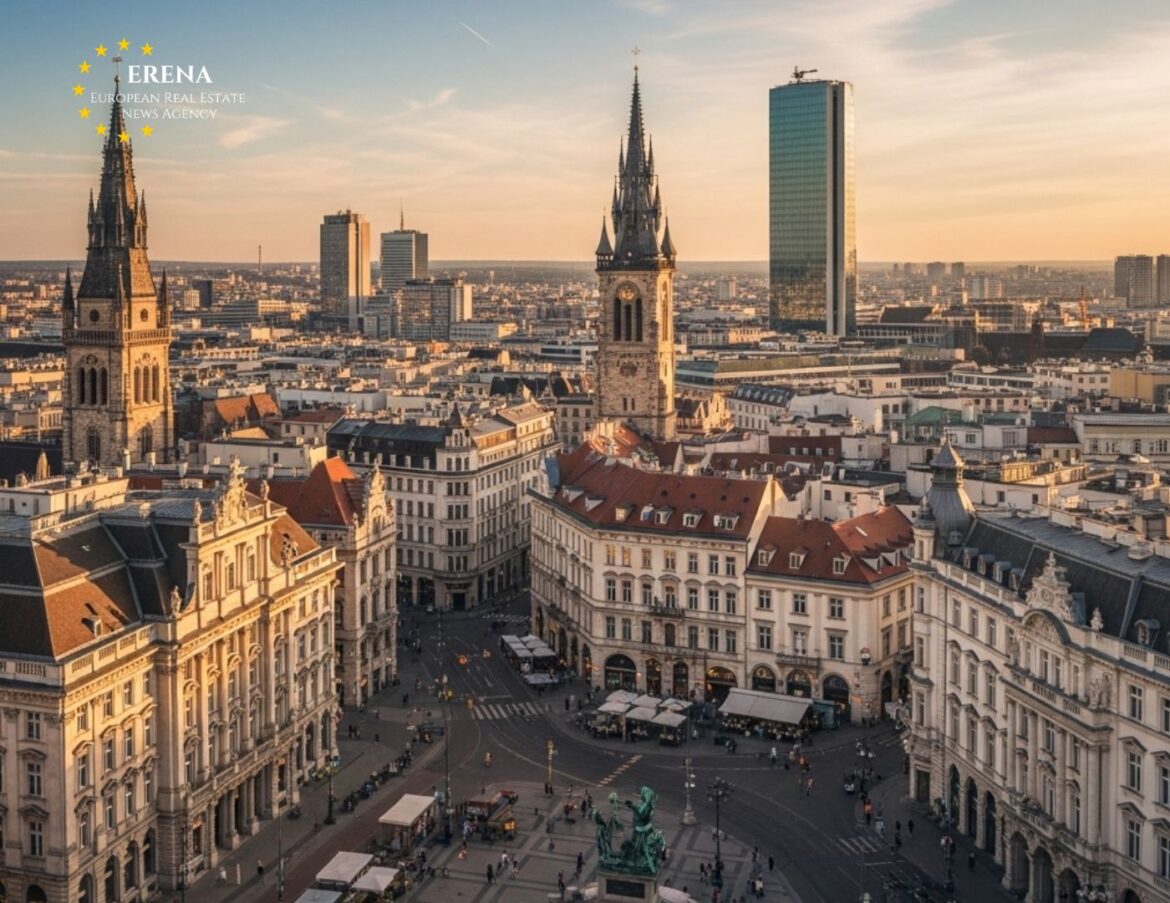In the first half of 2025, the European real estate market showed clear signs of revival. According to Savills, total property investment volumes reached €95 billion. This reflects a gradual recovery after a period of uncertainty driven by high interest rates, geopolitical tensions, and inflationary pressures. While deal volumes remain below pre-crisis levels, there are notable positive shifts, particularly in logistics, residential, and alternative real estate sectors.
Growing Activity in H1 2025
Compared to the same period in 2024, investment volumes rose by 12%, indicating a growing appetite among investors for European assets. The leading contributors to this increase were Germany, France, the UK, the Netherlands, and Spain. Germany maintained its position as the largest market, with deal volumes of €22 billion, despite continued caution among institutional investors.
France recorded deals totaling approximately €14.3 billion, mainly in Paris and surrounding areas. The UK showed moderate growth, reaching €13.5 billion, with increased activity in logistics and rental housing segments.
Most Active Sectors
Logistics real estate continued to attract robust investment flows. As demand for warehouses and distribution centers remains high due to e-commerce and manufacturing activity, this segment accounted for over €22 billion—nearly a quarter of the total market.
Residential real estate, including PRS (Private Rented Sector) and student housing, was the second most active sector, with €19 billion in investments. This interest is driven by strong demand for rental housing and a shortage of new supply in growing urban centers like Barcelona, Berlin, and Warsaw.
Office real estate, despite ongoing challenges linked to hybrid work models, remains significant. High-quality and ESG-certified office buildings in major cities continue to attract investor interest. London, Amsterdam, and Paris led the way, with total office deals reaching €17 billion.
Alternative assets, including data centers, healthcare, senior living, and hostels, attracted over €9 billion. This category is growing due to its stable income streams and long-term lease structures.
Investors Return—Cautiously
According to Savills analysts, international investors—especially from the US, Middle East, and Asia—are returning to European real estate markets. However, overall investor behavior remains cautious. The current investment landscape favors strategies focused on reliable income and sustainable development (ESG).
Private equity funds and sovereign wealth funds are concentrating on prime assets in logistics and rental housing, while institutional investors increasingly pursue club deals and joint ventures to mitigate risk.
Pricing Adjustments Persist
Despite the rise in transaction volume, price corrections are ongoing. Office asset prices are, on average, 5–7% lower than their 2022 peaks. The steepest discounts are seen in low-efficiency buildings in secondary locations.
Conversely, ESG-compliant assets are more resilient. In Paris, for example, rents for green office buildings remain stable, and investors are willing to pay a premium for energy-efficient properties.
Interest Rates and Lending
High interest rates across the eurozone and the UK continue to suppress leveraged deal activity. Many investors are opting for all-equity deals or exploring creative financing models, such as mezzanine debt, bridge loans, and structured credit instruments.
Nevertheless, expectations for rate cuts in the second half of 2025 are generating optimism. Some investors are already closing deals in anticipation of a more favorable financing environment—particularly in high-yielding segments.
Regional Highlights
- Germany: Berlin and Munich saw residential and ESG-focused office deals dominate the market.
- France: Strong activity in the Paris region, especially in business park development and office refurbishments.
- Italy: Growing interest in hotel assets, particularly in Rome, Milan, and tourist regions.
- Spain: PRS and coworking sectors are thriving, fueled by demand from young professionals and digital nomads.
- Poland: Warsaw is emerging as a regional hub, with increasing volumes in office and logistics transactions.
Outlook for H2 2025
Savills forecasts continued recovery in the second half of the year. Analysts predict that total investment volumes could surpass €200 billion by year-end, assuming central banks begin to ease monetary policy.
Key focus areas will likely include sustainable assets, digital infrastructure, and multifamily housing. Value-add strategies—targeting assets with potential for repositioning, refurbishment, or ESG upgrades—are also expected to gain ground.
Expert Commentary
Anna Broder, Director of Savills Research Europe, stated:
“Despite macroeconomic challenges, investors are steadily returning to European markets. Properties that meet sustainability and energy-efficiency standards are in high demand. We’re seeing a shift toward assets offering stable returns and long-term value.”
She also highlighted the importance of adapting to tenant expectations, including flexible space, smart technologies, and ESG-oriented environments.
Conclusion
The European real estate market in H1 2025 is showing clear signs of resilience. The €95 billion in deals signals that investors are adapting to the new market landscape, with a strong emphasis on sustainability, digital transformation, and risk mitigation. While a full return to 2021 levels is still ahead, market sentiment is improving as economic conditions stabilize and interest rate cuts loom.
In the coming months, investor attention is likely to concentrate on high-growth segments like logistics, rental housing, data centers, and ESG-certified office spaces. Successful investment strategies will require not only solid macroeconomic analysis but also alignment with transformative trends shaping the future of real estate in Europe.

